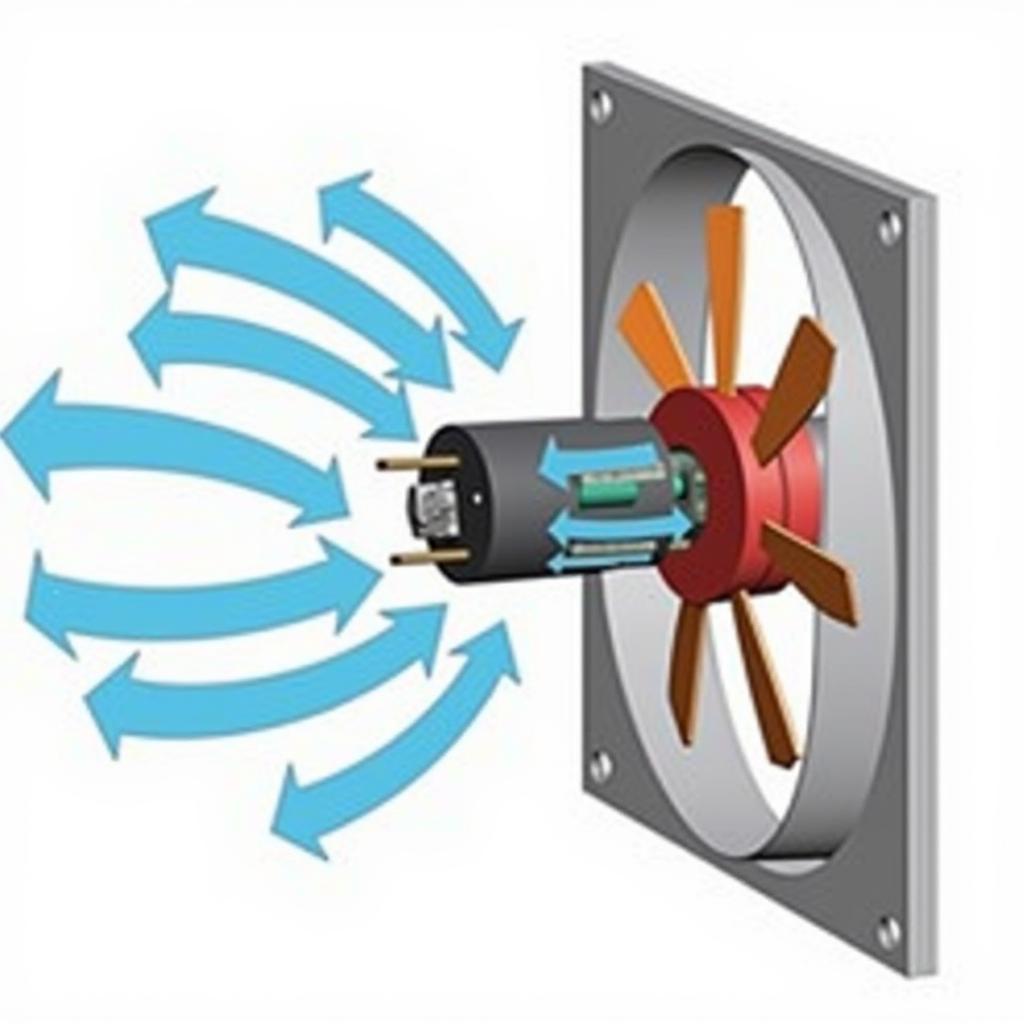DC motor fans are an essential part of many electronic devices and systems, quietly and efficiently keeping things cool. While often overlooked, understanding how these fans work and the factors that influence their performance can be crucial for anyone involved in electronics, from hobbyists to seasoned engineers.
The Mechanics of a DC Motor Fan
At the heart of every DC motor fan lies a simple yet effective principle: the interaction of magnetic fields. These fans utilize direct current (DC) to create a rotating magnetic field within the motor, which in turn drives the fan blades and generates airflow.
The motor itself consists of two key components: a stator, which is stationary, and a rotor, the rotating element. Permanent magnets are strategically placed within the stator, creating a fixed magnetic field. The rotor, typically wound with copper wire, carries the DC current.
When DC current flows through the rotor windings, it generates its own magnetic field. This field interacts with the stator’s magnetic field, causing the rotor to spin. This rotation is facilitated by the commutator and brushes, which ensure that the current flow through the rotor is constantly reversed, maintaining the rotational force.
 DC Motor Fan Airflow
DC Motor Fan Airflow
Factors Affecting DC Motor Fan Performance
Several factors influence the performance of a DC motor fan, determining its speed, airflow, and efficiency.
Voltage and Current:
The applied voltage and current directly affect the strength of the magnetic field generated by the rotor. Higher voltage and current result in a stronger magnetic field, leading to faster rotation and greater airflow. However, exceeding the motor’s rated voltage or current can lead to overheating and damage.
Number of Poles:
The number of poles in the motor also plays a role in its speed. Generally, motors with more poles rotate slower but offer higher torque, making them suitable for applications requiring higher starting force.
Blade Design:
The design of the fan blades significantly impacts airflow and noise levels. Factors like blade size, shape, angle, and number contribute to the fan’s overall performance. For instance, larger blades can move more air at lower speeds, while steeper blade angles can generate higher static pressure.
Bearing Type:
The bearings used in the motor affect its lifespan, noise, and efficiency. Common types include ball bearings and sleeve bearings. Ball bearings offer lower friction and longer lifespan, while sleeve bearings are quieter and more cost-effective.
 Different Types of DC Motor Fans
Different Types of DC Motor Fans
Applications of DC Motor Fans
DC motor fans find applications in a wide range of devices and industries due to their versatility and efficiency.
-
Electronics Cooling: They are commonly used in computers, laptops, gaming consoles, and other electronic devices to dissipate heat generated by components like processors and graphics cards.
-
Industrial Equipment: DC motor fans are crucial for cooling industrial machinery, control panels, and power supplies, ensuring optimal operating temperatures and preventing overheating.
-
Medical Devices: They are employed in medical devices like ventilators, oxygen concentrators, and incubators, where precise and reliable airflow is paramount.
-
Automotive Applications: DC motor fans are used in car heating and air conditioning systems, as well as for cooling engine compartments.
Conclusion
DC motor fans are indispensable components in numerous applications, silently and reliably ensuring proper cooling and ventilation. Understanding their working principles, factors affecting performance, and diverse applications empowers users to make informed decisions regarding selection, installation, and maintenance. By appreciating the crucial role these fans play, we can ensure the longevity and optimal performance of our electronic devices and systems.


